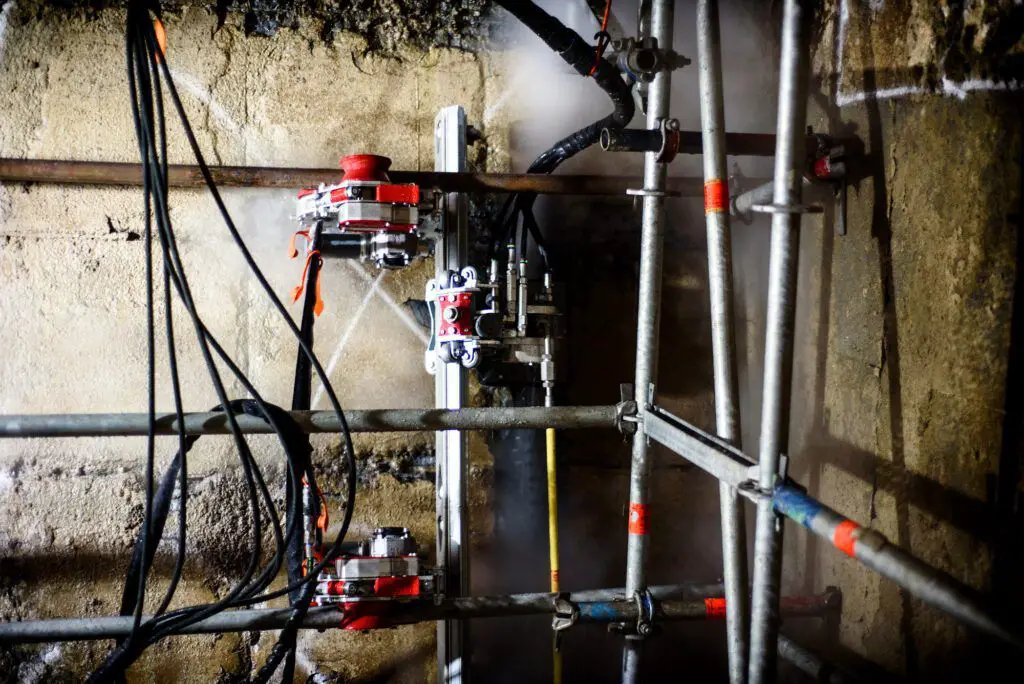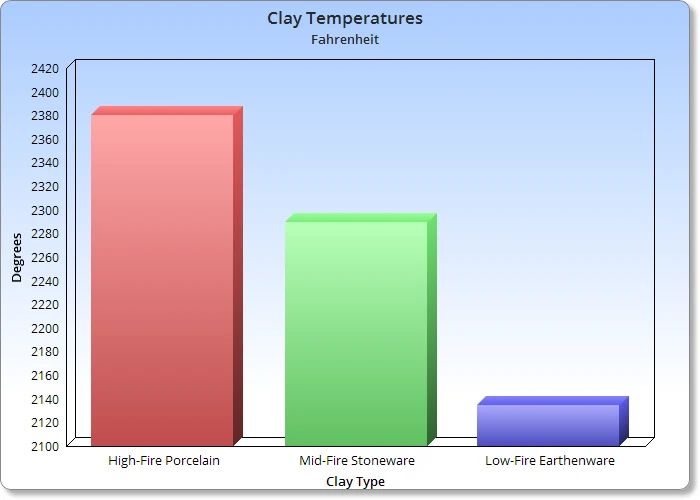What Does A Refractory Do?
A refractory is a material that is resistant to high temperatures and is used to line furnaces, kilns, incinerators, and other high-temperature equipment. Refractories are essential in industries like steel production, glassmaking, and cement manufacturing, where materials need to be heated to extremely high temperatures.
Refractories play a critical role in many industrial processes by providing thermal insulation and preventing wear on equipment from high temperatures (Worldrefractories.org, 2022). Without refractories, industrial processes that require intense heat would not be possible. Refractories allow industries to safely reach and sustain the extreme temperatures needed to produce materials like metals, glass, and cement.
This article will provide an overview of what refractories are, how they are manufactured, the different types and their properties, applications across various industries, proper installation and maintenance, and health and safety considerations. The future trends and advancements in refractory technology will also be explored.
Purpose and Function
Refractories are heat-resistant materials that can withstand extremely high temperatures, usually above 1000°C (1). They are used to line high-temperature furnaces, kilns, and reactors to retain heat, protect the structure of the equipment, and prevent contamination of materials during the production process (1).
The key purposes and functions of refractories are:
- Withstand very high temperatures without deforming or decomposing
- Contain and conserve heat within high-temperature equipment
- Protect the structure of furnaces, reactors, and other units from damage due to high heat
- Prevent contamination between the refractory material and the materials being processed
By being able to withstand high temperatures while also insulating and protecting the equipment, refractories enable many essential industrial processes involving extremely high heat, such as steelmaking, glassmaking, and cement production (1). Their unique properties make them a critical material across many industries.
(1) https://www.researchgate.net/publication/324042406_Review_of_Refractory_Materials_for_Innovative_Investigation_and_Testing
Manufacturing Process
The manufacturing process for refractories involves several key steps:
Raw materials – The main raw materials used are alumina, silica, magnesia, and carbon. Other raw materials can include chrome ore, zircon, and various metal powders or additives that give specific properties.
Forming – The raw materials are crushed, milled, and screened to achieve proper particle size distribution. The materials are then mixed and formed into shapes through molding, pressing, extrusion, or ramming. Plasticizers or binders may be added to help with forming.
Drying – The formed shapes are dried at room temperature or in ovens/dryers to remove moisture before firing. This is a critical step, as trapped moisture can cause defects during firing.
Firing – The dried shapes are fired at high temperatures, often over 1500°C. Firing sinters the grains, giving strength, and creates refractory mineral phases that can withstand high temperatures. Precise control over temperature, atmosphere, and duration is required.
Sources:
https://wenku.baidu.com/view/d9d27a3267ec102de2bd8990.html
Types of Refractories
There are many types of refractory materials that are used for various high temperature applications. Some of the major types include:
Silica Refractory
Silica refractory products contain at least 93% silica (SiO2). They have good load bearing capacity and high strength at elevated temperatures. However, they are attacked by alkalis, acids and halogens apart from water. They also undergo thermal shock and have poor impact strength. Silica refractories are used in areas of glass furnaces, coke ovens, hot blast stoves, blast furnaces etc. (Source)
Fireclay Refractory
Fireclay refractories contain about 30 to 45% alumina (Al2O3) and 50% silica. They have good resistance to abrasion and spalling resistance. However, their load bearing capacity is low. Fireclay refractories are mainly used in ovens, kilns, stoves, hot blast furnaces etc. (Source)
High Alumina Refractory
High alumina refractories contain over 45% alumina. They have high refractoriness, load bearing capacity and volume stability. However, they are susceptible to hydration. High alumina refractories are used in areas requiring high physical and chemical wear resistance such as the lower stacking region of blast furnaces. (Source)
Magnesite Refractory
Magnesite refractories contain over 85% magnesia (MgO). They have excellent resistance to basic slags. However, they are prone to break down under high CO2 pressure at elevated temperatures. Magnesite refractories are mainly used in cement kilns, metallurgical furnaces, incinerators etc. (Source)
Properties
Refractories are materials that can withstand extremely high temperatures, ranging from 1,600°C to 2,800°C depending on the material composition. They are characterized by some key properties that enable them to perform well under such demanding conditions:
Melting point – Refractories have very high melting points, well above the operating temperatures they will be exposed to. This allows them to maintain their strength and shape without melting or deforming under high heat. Some advanced refractories like zirconia can withstand temperatures up to 2,800°C.1
Thermal conductivity – They are designed to have low thermal conductivity, meaning they do not readily conduct or transmit heat. This helps prevent heat loss and protects components behind or near the refractory lining.
Porosity – Their porous structure contains many small air pockets and passages which provide insulation. The pores resist heat flow while also allowing flexing to accommodate thermal expansion.
Applications
Refractories are used in many high-temperature industrial processes to contain heat and withstand physical wear and corrosion. Some of the major applications for refractories include:
Steel: Refractories line steel-making furnaces, ladles, tundishes, and other vessels to withstand extremely high temperatures of molten metal and slag. Key properties needed are high hot strength, thermal shock resistance, slag corrosion resistance, and spalling resistance. Magnesia-carbon and alumina-silica refractories are commonly used in steel applications.
Glass: Refractory materials must withstand rapid heating and cooling cycles and corrosion of molten glass. High alumina, silica, and zircon refractories are common. Precise control of thermal properties is needed.
Cement: Refractories line cement kilns and are exposed to abrasive dust and elevated temperatures up to 1500°C. Calcium aluminate, high alumina, and silica refractories are commonly used. Resistance to thermal shock and alkali attacks is critical.
Petrochemical: Refractories are used in reformers, crackers, incinerators, and synthetic gas reactors. Key properties are thermal shock resistance, resistance to carbon deposition, and abrasion/corrosion resistance. Silicon carbide and high alumina refractories are commonly used.
Installation
Refractories are installed in various high-temperature environments using different methods depending on the application, the service conditions, the type of refractory used, and the equipment available. Four of the main installation techniques are bricklaying, ramming, gunning, and pumping.
Bricklaying involves laying firebricks and refractory shapes by hand and securing them with refractory mortar. This is a common technique used to line furnaces, boilers, kilns, and other thermal process equipment. Skilled masons are required to properly install refractory bricks.
Ramming involves manually tamping mixes of granular refractory aggregate and binders into a form or onto a surface. Ramming tends to produce a high-density installation capable of withstanding mechanical and thermal stresses. It is commonly used for patching and repairing existing refractories.
Gunning involves pneumatically projecting a stream of wet refractory mix onto a surface. The mix sets in-place. Gunning allows the rapid installation of refractory linings and is adaptable to complex geometries. Proper mixing and skilled nozzlemen are critical to achieve good results.
Pumping refers to pumping refractory concrete, mortars, or grouts into forms and voids. Pumping allows accessing hard to reach areas and is commonly used for refractory linings in vessels, ducts, and large equipment. Careful planning is needed to ensure the material flows and sets properly.
Maintenance

Proper maintenance is crucial for ensuring refractories operate safely and efficiently. Regular inspection and repairs help extend service life. According to Vitcas Refractories, key maintenance activities include:
Inspection – Visually check linings for cracks, damage, wear and tear. Use temperature probes to identify hotspots. Schedule shutdowns to fully inspect.
Repair – Patch small cracks and holes immediately to prevent further degradation. Use similar refractory materials and proper installation techniques.
Rebricklining – Eventually linings require full replacement. Plan rebricklining during shutdowns. Follow manufacturer instructions for surface preparation, brick layouts, curing times.
Proper rebricklining helps optimize efficiency and avoid premature failures. Refractory maintenance protects equipment, reduces energy losses, and improves safety.
Health and Safety
Working with refractories can pose health and safety risks that workers should be aware of. Proper personal protective equipment (PPE) is essential when handling, installing or removing refractory materials. Workers should wear hard hats, safety glasses, heat-resistant gloves and clothing, and steel-toe boots at minimum. Respirators may also be required when dealing with dust from demolition or cleanup. Refractory materials contain silica, so exposure can lead to serious illnesses like silicosis. Using wet methods when cutting refractories and having proper ventilation reduces this risk.
According to the World Refractories Organization, “Another vital aspect of refractory safety is personal protective equipment (PPE). Workers should always wear the proper PPE when working with or around refractories” (source). They advise that in addition to standard PPE, specialty equipment like aluminized gear and respirators may be necessary in some refractory applications.
Proper installation and maintenance of refractories is also important for safety. Bricking Solutions notes that devices like safety cages, personnel tunnels, kiln access ramps, and bricking machines can protect workers during the installation process (source). Regular inspection and maintenance of refractories prevents hazards like spalling or collapse. Following comprehensive safety procedures ensures refractory workers avoid injury.
Future Trends
The refractory industry is constantly evolving as new technologies emerge. Some key trends that are shaping the future of refractories include:
New materials – Companies are developing innovative new refractory materials like alumina-carbon refractories, spinel refractories, and refractories using nanotechnology that offer improved performance characteristics.
Robotics – The use of robotics and automation in refractory production and installation is increasing. Robots improve precision, boost productivity, and enhance safety.
Recycling – There is a growing focus on recycling spent refractory materials. This reduces waste and results in more sustainable refractory manufacturing processes. Some companies now offer recycling services to reclaim used refractories.
The evolution of the refractory industry will likely involve finding ways to manufacture more durable, higher performance refractories while also minimizing environmental impacts through new materials, automation, and recycling.





